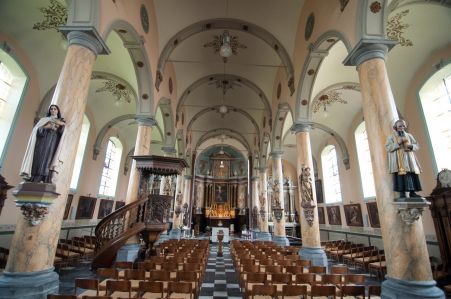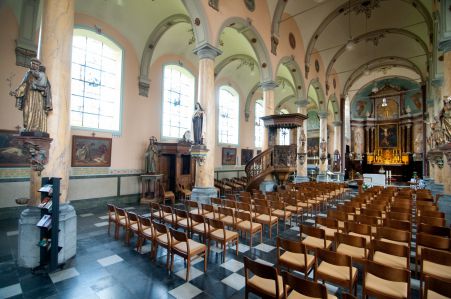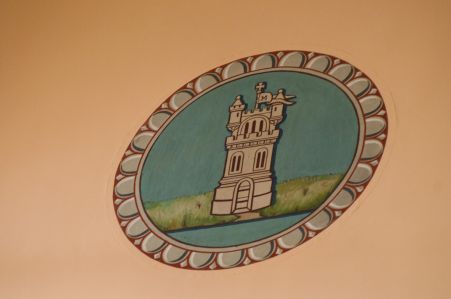Church | 1774 | Neoclassical | Catholic Church




Map
Opening hours
01 January - 31 December
Mon 9.00 - 17.00
Tue 9.00 - 17.00
Wed 9.00 - 17.00
Thu 9.00 - 17.00
Fri 9.00 - 17.00
Sat 9.00 - 17.00
Sun 9.00 - 17.00
Guided tour
Religious offices
Description
The village has many Livinus chapels, the biggest of which can be found behind the monastery in the Kauwstraat. The kiosk on the square was built in honor of Saint Livinus’ jubilee. Yet the church is dedicated to saint Martin, a contemporary of saint Livinus. The old church was pulled down in 1774 and replaced by the current, classical building in brick and sandstone. At the northern side of the church a small remnant of the original churchyard wall remains. The church was recently renovated.
Within the church we can see a listed organ built by Van Peteghem (1782), a famous family of organ builders. The southern transept contains a relic of saint Brice (son of Livinus), which is carried in the procession during the Livinus Festival.
The stations of the Cross were painted around 1936 by Jan de Cooman. The last station (Christ at the cross) was rejected by the priest at that time because neither Mary nor John are represented. That is why these Stations of the Cross have a fifteenth station.
The interior paintwork is Late-Regency style. Artist J. Pauwels painted the paintings on the 18th century main altar (Christ at the Cross) and both baroque side altars (including The Adoration of the Shepherds) in the second half of the 19th century.
Source :
Inventaris Bouwkundig Erfgoed
http://sites.google.com/site/sintlievensesse/home
Photos
Media
Remarkable elements
Pulpit
The oak pulpit is one of the most beautiful pieces of the interior. It probably dates from the second half of the 17th century. The outside of the cockpit shows the image of the four evangelists.
Statue of Our Lady, Queen of Heaven
The eighty cm high dressed baroque statue features the status symbols that match a queen: a silver crown, a sceptre and a king's cloak.
Painting "Adoration of the Magi"
This oil painting on canvas dates from 1873 and is by Joseph Pauwels. A beautiful clair-obscure effect is accompanied by the use of soft tones so that all attention goes to the newborn child.
Shrine of St. Brixius
Typically romantic shrine in late Gothic style from 1850 that would contain a relic of St. Brixius.
Painting "The Episcopal Consecration of St. Livinus".
This painting of unknown painting probably dates from the Renaissance period. The bishops on the left (H. Amandus) and right (H. Martinus) put Saint Livinus the mitre of the diocese of Ghent on the head.



















